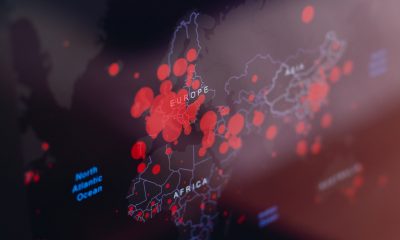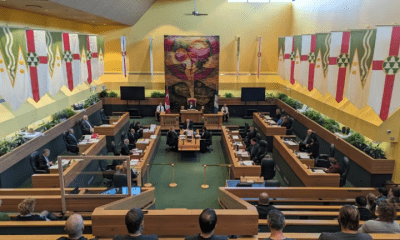Technology
Multimedia resources help teachers share Indigenous knowledge in the classroom

Children in schools across Manitoba are now being exposed to these gifts, thanks to the development of innovative curriculum resources — to integrate Indigenous perspectives into school curricula through inquiry, video, images, quotes, arts, activities and exemplars. (Pixabay photo)
Picture a lake as smooth as polished granite parted by the keel of a narrow vessel with lines that gently curve from stem to stern.
This shapely canoe, the icon of Canada, continues to be the most efficient means of transporting people through unforgiving terrain. The canoe’s design in all its wonder exemplifies the intersection of art and science and epitomises balance, strength, beauty, function and adaptability.
Now imagine a garden where plants protect and nurture each other’s growth. It’s a sustainable garden that illustrates the benefits of companion planting and brings to life a story that has endured for thousands of years: The story of The Three Sisters.
This story of corn, beans and squash has been passed down from generation to generation through oral tradition. The relationship of these plants to each other, the earth, and the people who know how to plant them reflect the interdependence of all living things.
Both The Birch Bark Canoe and The Three Sisters are gifts — oral stories –shared with us by First Nations peoples. They are now innovations that live on as we share them in our schools and with our children. They provide an understanding of the land and how we are sustained by it.
Children in schools across Manitoba are now being exposed to these gifts, thanks to the development of innovative curriculum resources — to integrate Indigenous perspectives into school curricula through inquiry, video, images, quotes, arts, activities and exemplars.
As a non-Indigenous instructor in education at the University of Winnipeg, with 30 years of teaching experience in inner city schools, I was fortunate to follow the development of these resources and review them prior to publication.
Inspiring Indigenous youth in STEM
Drawing upon knowledge shared by Elders, scholars, students and teachers, Birch Bark Productions invited educators from a range of disciplines to share their thinking and designs.
The resulting teaching resources offer insights into a circular worldview, help us understand the idea of stewardship and invite us to be responsible participants in relationship with the land. These are deep and essential concepts for education to embrace.
They were originally conceived as a catalyst for inspiring Indigenous youth to pursue STEM (science, technology, engineering and mathematics) fields of study.
Careers involving science, technology, engineering and mathematics have reported that First Nations are underrepresented in their work force.
In an attempt to address this disparity, the guides were commissioned and funded by a partnership of Engineers Canada, Manitoba Aerospace, the Engineering Access Program and the Faculty of Engineering at the University of Manitoba. This support allows the resources to be provided free of charge to anyone interested in using them.
The great questions of life
One of the most compelling aspects of these guides is the holistic approach articulated. Subject areas from drama to mathematics are integrated. The Birch Bark Canoe works with provincial curricula to tell a curriculum story, while The Three Sisters expands the conversation to include a range of approaches and designs.
Learning activities are described through the lens of teachers and their pupils. Both are presented in the oral tradition of stories and illuminated through the circle of life, the spiritual basis of Indigenous peoples.
Throughout these guides the profound words of Elders highlight the text and images. They include the words of Justice Murray Sinclair, Chair of the Canadian Truth and Reconciliation Commission:
“In order for any society to function properly, it must raise and educate it’s children so they can answer what philosophers such as Socrates and Plato and Aboriginal Elders, call the `great questions of life.’ Those questions are: Where do I come from? Where am I going? Why am I here? Who am I? Children need to know their own personal story.”
Making reconciliation possible
The feedback, informally, from teachers has been terrific — especially in rural communities.
Frontier School Division the largest geographic division in the province of Manitoba is currently putting them to full use. A quick link to an online version of the video and guide will soon be at every teacher’s computer station for easy access.
The Sunrise School Division has also used the guides with early and middle grade students to experience the perspectives of land as teacher.
As a place of beginning, these guides recognise that it is through education that reconciliation becomes possible.
They acknowledge the contributions of Indigenous people to our world and show us ways to teach our children.
This article was originally published on The Conversation. Disclosure information is available on the original site





















